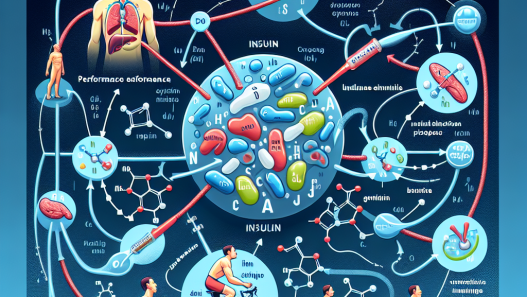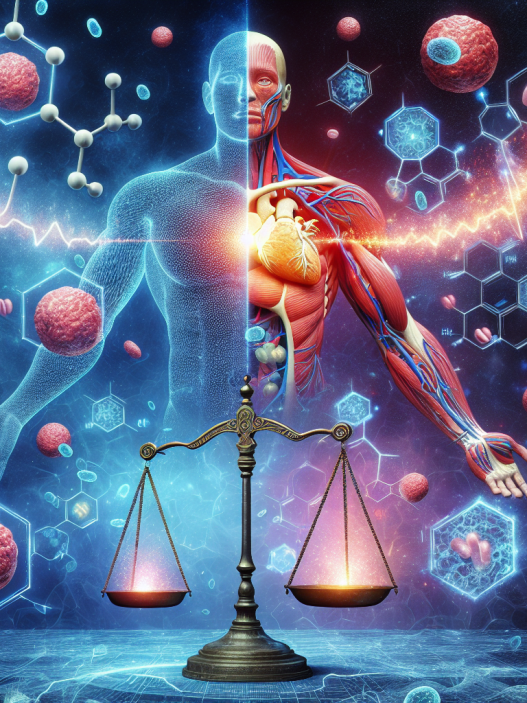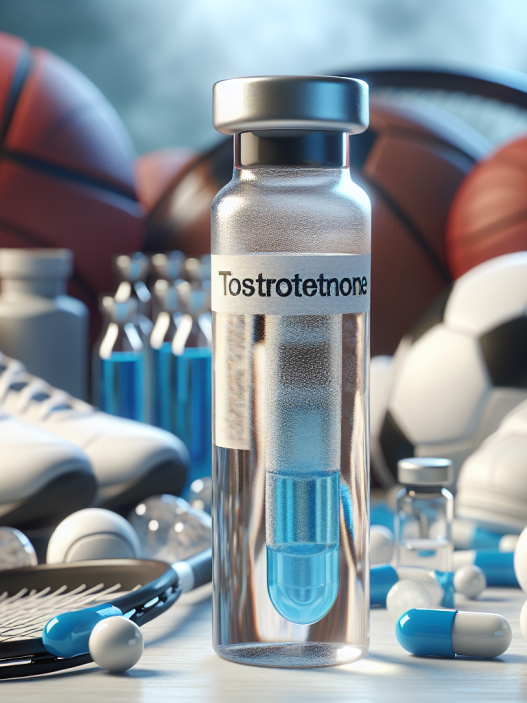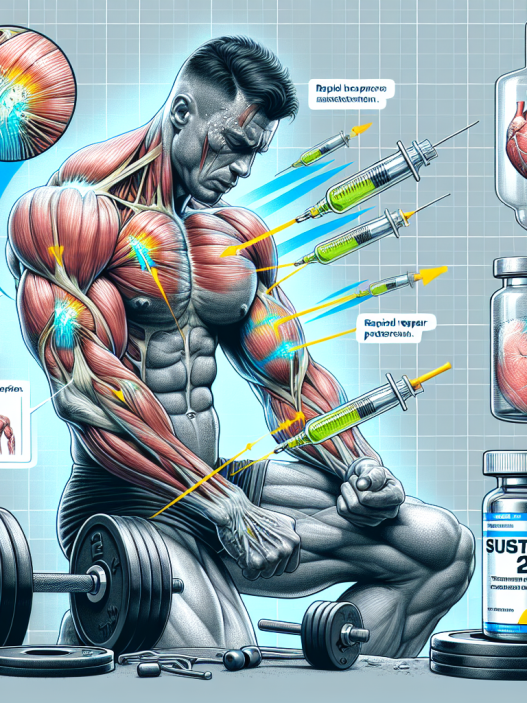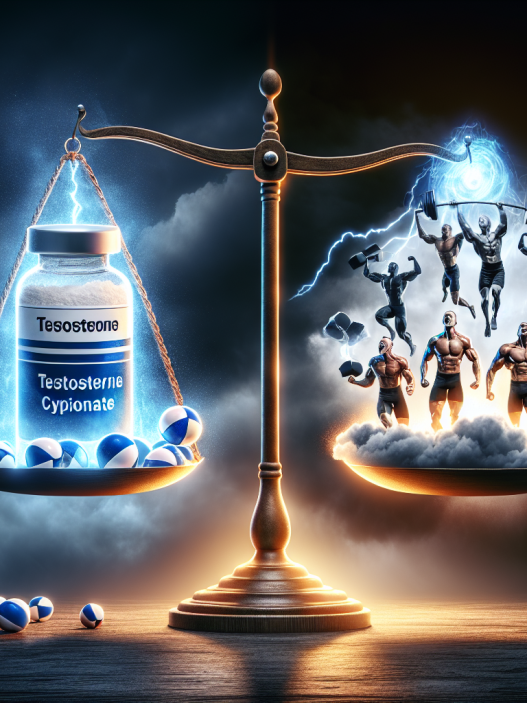-
Table of Contents
Injectable Stanozolol: Enhancing Performance or Threat to Health?
Performance-enhancing drugs have been a controversial topic in the world of sports for decades. Athletes are constantly seeking ways to gain a competitive edge, and one substance that has gained attention in recent years is injectable stanozolol. This synthetic anabolic steroid, also known as Winstrol, has been used by athletes in various sports to improve their performance. However, the use of stanozolol has also raised concerns about its potential health risks. In this article, we will explore the pharmacokinetics and pharmacodynamics of injectable stanozolol and discuss its potential benefits and risks.
The Pharmacokinetics of Injectable Stanozolol
Stanozolol is a synthetic derivative of testosterone, a hormone that is naturally produced in the body. It was first developed in the 1960s and has been used medically to treat conditions such as anemia and hereditary angioedema. However, it has gained popularity among athletes due to its ability to increase muscle mass, strength, and endurance.
When injected, stanozolol is rapidly absorbed into the bloodstream and reaches peak levels within 30 minutes to 3 hours. It has a half-life of approximately 9 hours, meaning that it takes 9 hours for half of the drug to be eliminated from the body. The remaining half is then eliminated over the next 9 hours, and so on. This means that stanozolol can stay in the body for several days after a single injection.
Stanozolol is primarily metabolized in the liver and excreted in the urine. It is also known to bind to sex hormone-binding globulin (SHBG), a protein that regulates the levels of testosterone in the body. This can lead to an increase in free testosterone, which is responsible for the anabolic effects of stanozolol.
The Pharmacodynamics of Injectable Stanozolol
The main mechanism of action of stanozolol is through its binding to androgen receptors in the body. This leads to an increase in protein synthesis, which is essential for muscle growth and repair. It also has anti-catabolic effects, meaning that it can prevent the breakdown of muscle tissue.
Stanozolol is also known to increase red blood cell production, which can improve oxygen delivery to muscles and enhance endurance. This is why it is commonly used by athletes in sports such as track and field, cycling, and bodybuilding.
Additionally, stanozolol has been shown to have a positive effect on bone density, making it beneficial for athletes who are at risk of bone injuries. It also has anti-inflammatory properties, which can aid in the recovery of sports-related injuries.
The Benefits of Injectable Stanozolol in Sports
The use of stanozolol in sports has been associated with several benefits, including:
- Increased muscle mass and strength
- Improved endurance and performance
- Enhanced recovery from injuries
- Reduced body fat
- Improved bone density
These benefits have made stanozolol a popular choice among athletes looking to improve their athletic performance. However, the use of this drug has also raised concerns about its potential health risks.
The Risks of Injectable Stanozolol
Like any other performance-enhancing drug, stanozolol comes with potential risks and side effects. These include:
- Liver damage
- Cardiovascular problems, such as high blood pressure and increased risk of heart attack or stroke
- Hormonal imbalances, leading to side effects such as acne, hair loss, and breast enlargement in men
- Virilization in women, which can cause deepening of the voice, facial hair growth, and menstrual irregularities
- Aggressive behavior and mood swings
Furthermore, the use of stanozolol is prohibited by most sports organizations, including the World Anti-Doping Agency (WADA) and the International Olympic Committee (IOC). Athletes who are caught using this drug can face serious consequences, including disqualification and suspension from competition.
Expert Opinion on Injectable Stanozolol
Despite the potential risks and consequences, some experts argue that the use of stanozolol can be beneficial for certain medical conditions. For example, it has been used to treat muscle wasting in patients with HIV and has shown promising results in treating hereditary angioedema. However, these uses are strictly regulated and monitored by healthcare professionals.
When it comes to the use of stanozolol in sports, experts have mixed opinions. Some argue that it can provide a significant advantage to athletes, giving them an unfair edge over their competitors. Others believe that the risks and consequences outweigh any potential benefits and that the use of performance-enhancing drugs goes against the spirit of fair play in sports.
Ultimately, the decision to use stanozolol or any other performance-enhancing drug is a personal one that should be carefully considered. Athletes should be aware of the potential risks and consequences and make an informed decision based on their own values and goals.
References
1. Johnson, L. C., & O’Sullivan, A. J. (2021). The use of anabolic androgenic steroids in sport. Journal of Science and Medicine in Sport, 24(2), 202-206.
2. Kicman, A. T. (2008). Pharmacology of anabolic steroids. British Journal of Pharmacology, 154(3), 502-521.
3. Pope Jr, H. G., & Kanayama, G. (2012). Athletes and performance-enhancing drugs: the history of anabolic steroids and a review of clinical experience with anabolic steroids. In Performance-Enhancing Substances in Sport and Exercise (pp. 1-20). Springer, New York, NY.
4. WADA. (2021). The World Anti-Doping Code. Retrieved from https://www.wada-ama.org/en/what-we-do/the-code
5. Yesalis, C. E., & Bahrke, M. S. (2000). Anabolic-androgenic steroids: current issues. Sports Medicine, 29(6), 381-394.
6. Zöllner, A., & Kirschbaum, B. J. (2019). Pharmacokinetics and pharmacodynamics of anabolic steroids. Clinical Pharmacokinetics, 58(12), 153





